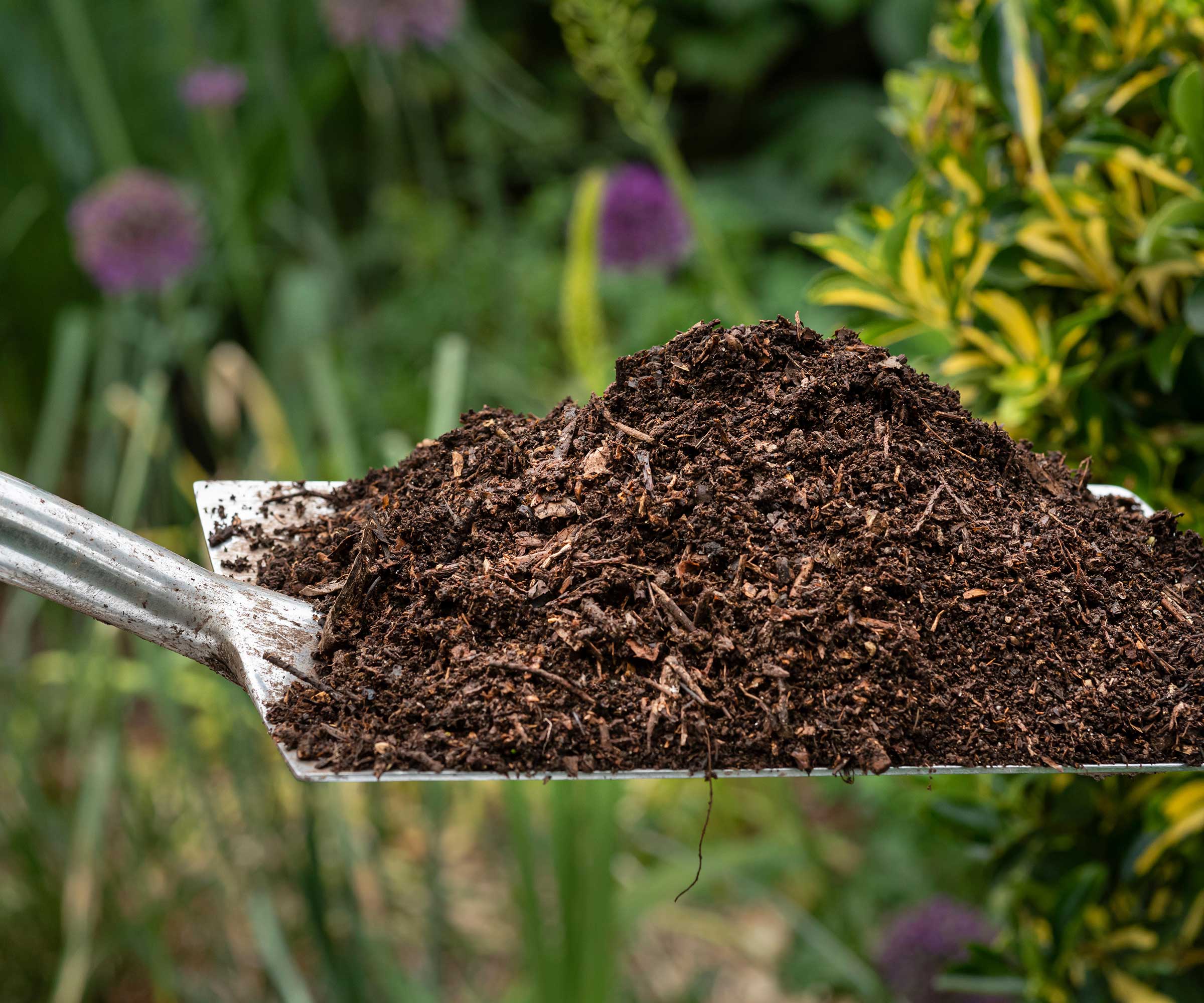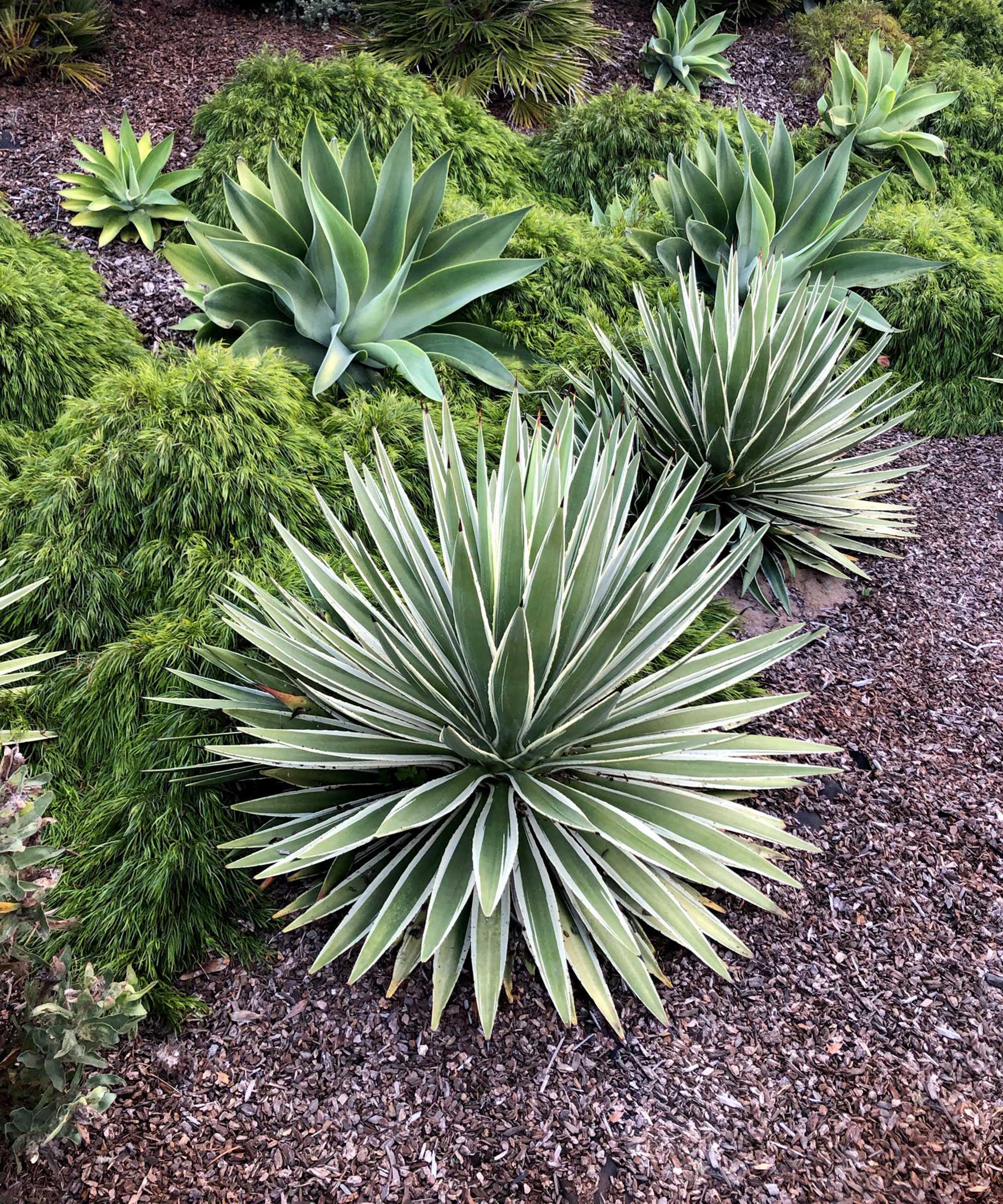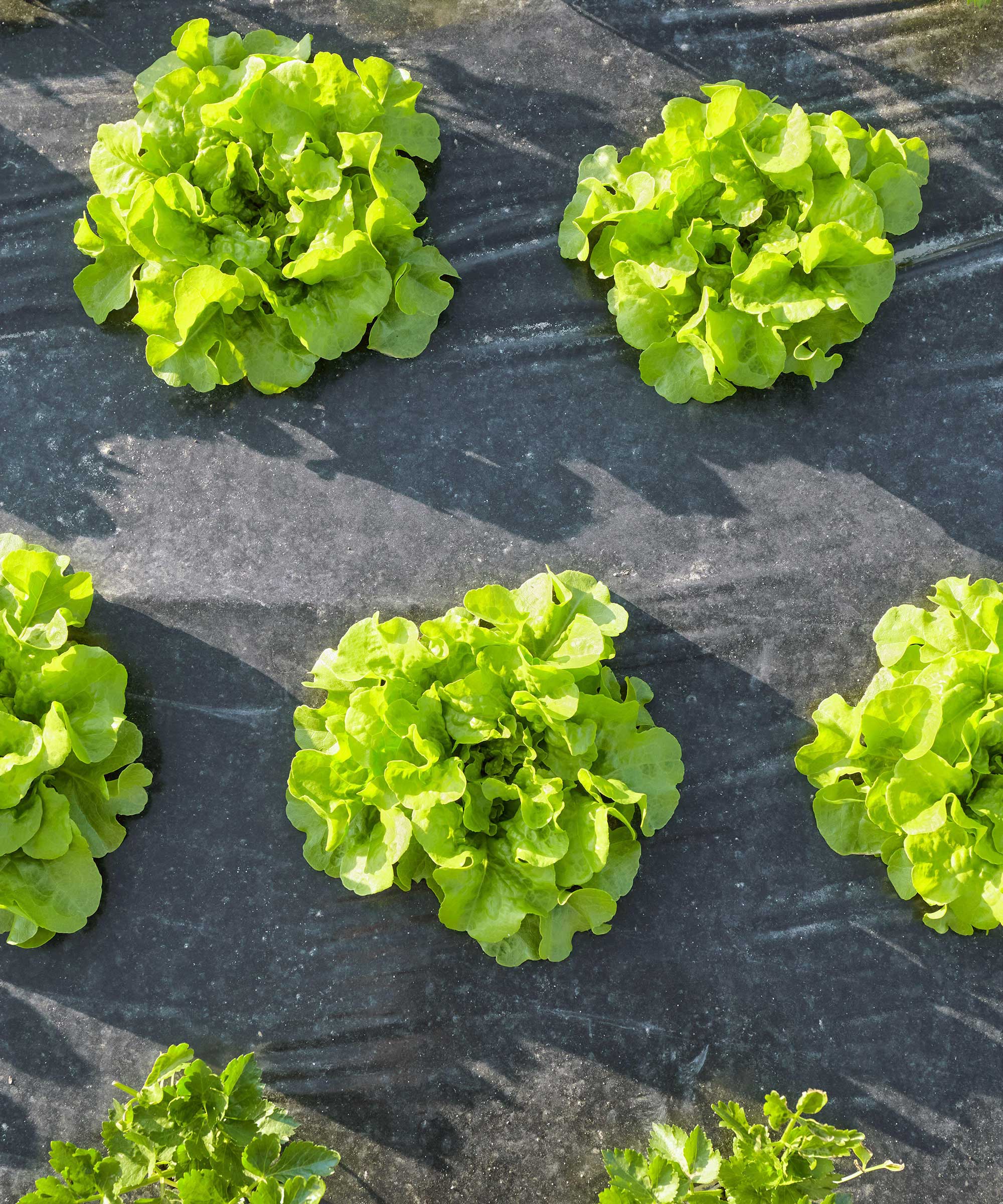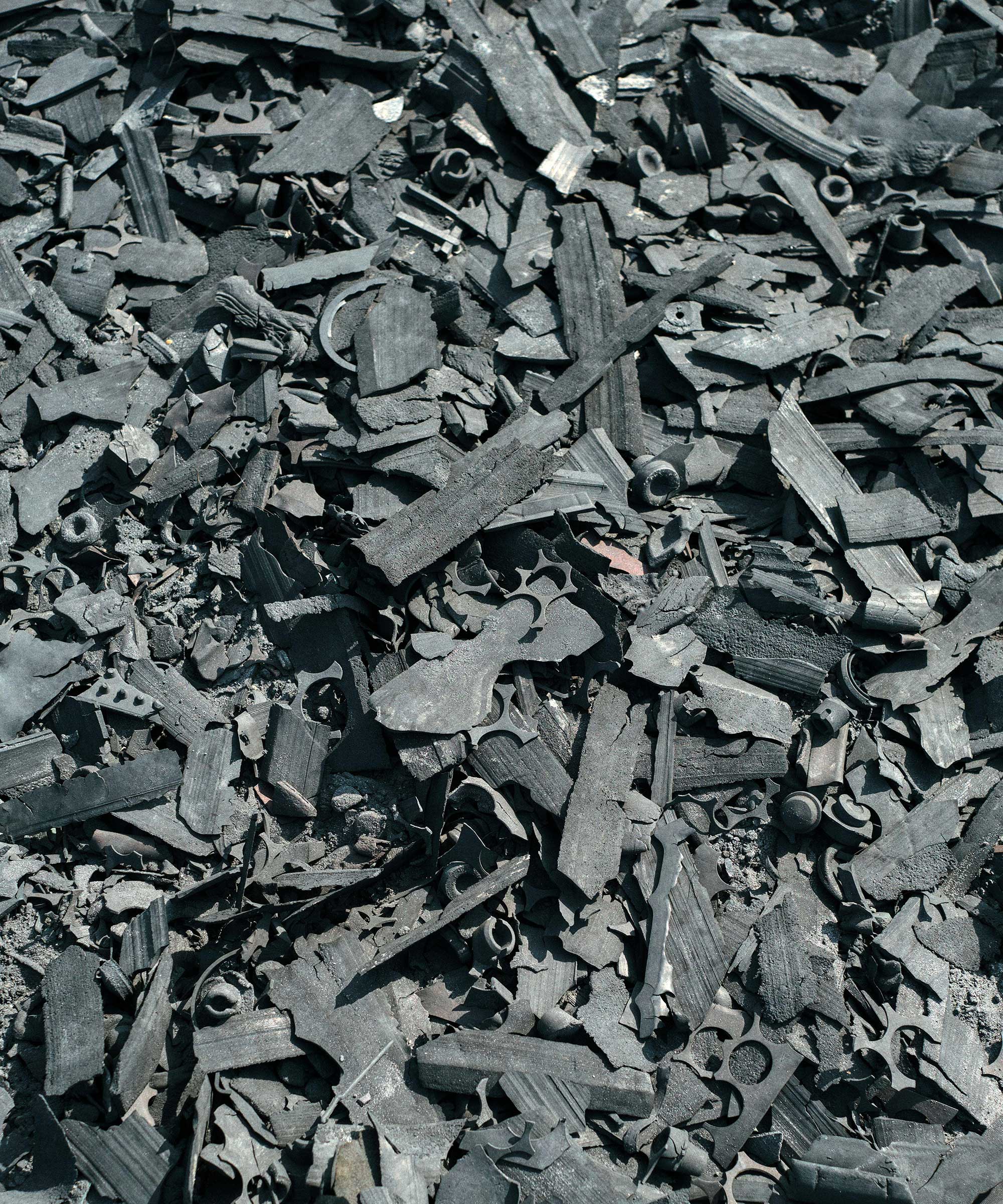8 types of mulch for gardening success – from homemade compost to pretty pebbles
These popular options will cut hours off the time you spend maintaining your yard – and some add serious style points, too


Garden mulches reduce the need to weed and water, amongst other benefits, and there is a wide variety to choose from. So, if you thought your only option was compost, think again. Sure, it's one of the most popular top dressings – but if you're buying the pre-bagged stuff, the costs can quickly rack up.
Choosing an alternative may help your budget go further, but that's not the only reason to explore your mulching options. After all, each one comes with its own benefits that might be better suited to your yard.
The important thing to remember is that mulches can be divided into two main categories: inorganic and organic. The key distinction between them is that organic mulches (which are naturally derived) will slowly break down into the soil, improving its structure and fertility. Inorganic ones won't, but on the plus side, they don't need replacing as often. To help you decide which mulch is right for your outdoor space, we've shared all the info you need to know on eight of the best.

As a former gardener and allotment-grower, Holly regards mulch as a game-changer for keeping maintenance time down. She even mulches some of her houseplants – using finely-cut gravel – to help retain moisture and improve the aesthetics.
5 types of organic mulch
Want to mulch your garden the natural way? These options are easy to apply, eco-friendly, and, in most cases, will gradually be pulled down into the ground by garden worms, giving your soil an extra boost of nutrients.
1. Homemade compost

Compost is a go-to mulching material for many gardeners
We'll start with compost – a classic soil improver that's rich in nutrients. Dig it into topsoil or add it to your containers and your plants will get a great head start – but it also makes a brilliant mulch.
Making homemade compost puts food scraps to good use – cutting back household waste and saving pennies in the process. Decomposition is sped up if you opt for hot composting or worm composting methods, but whatever approach you take, the resulting material will be crumbly, earth-like, and brimming with goodness.
Pile it on thickly around your plants and it will keep weeds at bay, help the soil retain moisture, and act as a protective blanket against winter weather. And, over time, all those nutrients will gradually make their way into the soil.
Design expertise in your inbox – from inspiring decorating ideas and beautiful celebrity homes to practical gardening advice and shopping round-ups.
The downsides? You'll need to replace it once or twice a year to continue reaping the benefits. It also isn't the prettiest of options.
2. Bark chippings

Bark chippings can often be acquired for free
Wood chips break down slower than compost, and are less effective at improving the soil. On the plus side, they look attractive and can be budget-friendly – if you find a local source. It can be worth contacting local arborists, too, for any going spare. Generally, you'll need to go and pick them up, so bear this in mind.
'My favorite place to get mulch is from our city's public works department,' says Deborah Niemann, the owner of Thrifty Homesteader, who explains how there are huge piles free for the taking. 'My husband takes the pick-up truck over there and they use a bucket loader to pick it up and dump it into the back of the pick-up. If you wanted a smaller amount, you could certainly take a garbage can over there and fill that up, but I love that we can get so much so quickly.
'Since we don't know where it came from and what it might have been sprayed with, we don't use this in the vegetable garden, but instead, we use it on paths and in our flower garden.' When it's free, you can easily put a couple of inches down, which means very few weeds can poke through, she adds.
You can even use your own garden waste if you've recently taken down a tree or a shrub. But wherever you get it from, if it's relatively fresh, allow it to break down a bit first. John Negus, a garden expert from Amateur Gardening, advises adding your own shredded material to your compost heap where, after several weeks, it will turn brown and fragment into raw humus.
'If you don’t do this, and use the shreddings straight from the shredder, soil bacteria, in decomposing them, will remove valuable nitrogen from the soil. This will leave it bereft of this element, which is vital for the development of robust foliage.'
3. Grass clippings

Put your lawn clippings to good use
Mowing your lawn not only smartens up your plot but can also provide you with fresh, and free, mulch. Providing the clippings are short, dry and definitely devoid of weeds, simply leave them on the top of your turf and they'll release valuable nitrogen into the soil. This will help to keep your lawn luscious and green.
Marjorie Beausoleil of Ethos Seed also uses grass clippings to mulch her vegetable garden. If you decide to do this too, again, ensure they're dry and without weeds, and avoid piling them up too thickly to prevent that rotting grass aroma.
'It always encourages worms and other beneficial insects to become more active and decomposes faster than most gardeners will believe,' she says. 'I have to reapply the grass clipping mulch many times a season – so much so that we sometimes mow the lawn simply in order to produce the mulch! It is also the most effective mulch we know to keep moisture in the ground.
'One thing: all lawns used to produce the grass clipping mulch should be free of chemicals. Even organically treated lawns can have a detrimental effect on the beneficial insects present in the vegetable garden,' she adds.
4. Leaf mold

Making leaf mold in fall is a must
Raking up leaves is on everyone's list of fall backyard jobs, but think twice before you add them to your garden waste. Instead, use them to make leaf mold: a valuable mulching material that's free and rich in nutrients.
All you need to do is pack the leaves into bin bags, with a few holes for drainage, and leave them out of sight to break down. The downside is you'll need to wait several months to use it, but it's worth it.
5. Ground cover plants

Create a botanical tapestry that blocks out weeds
Benjamin Vogt, a natural garden designer and author of A New Garden Ethic (available on Amazon), chooses to use a green mulch, or living mulch, in his designs. The idea is to build up dense layers of planting, and the result is a wilder, nature-inspired look that works well for prairie-style borders.
'On our new installs we may use an initial thin layer of wood mulch to help lower germination rates of annual weeds like foxtail or crabgrass while increasing soil moisture. But, the plan is to have the desirable plants we installed self-sow, spread, and fill in quickly,' he explains. 'Too much wood mulch would impede that process. As the plants fill in, they naturally outcompete weeds and no further wood mulch applications are needed.'
He uses a base layer or ground cover of native sedges (Carex spp.) or native short bunchgrasses (Bouteloua spp.) planted 12 inches apart on a grid. Intermediate and architectural layers, which are often seasonal flowers, are then planted around this.
3 types of inorganic mulch
Sure, inorganic mulches won't give your soil that nutrient boost, nor will they improve its aeration, as organic mulches do. They are very low maintenance, though, as you won't need to replace them anywhere near as often once they've been set. And they have other benefits, too.
1. Gravel and pebbles

Gravel is a low-maintenance and attractive mulching option
These types of mulch are one of the best for upping the aesthetics of your flower beds and borders. There are lots of color combinations to go for, as a quick search on Amazon demonstrates.
Ideal for dry gardens, they look much better than bare soil, while helping to suppress weeds and retain moisture just as organic mulches do. What's more, if it rains, they won't wash away, and they help to prevent soil erosion in inclement weather.
They can be used to create informal pathways, to top patio pots, or to surround perennials planted in the ground. Avoid using them around annuals though, as they can be arduous to remove again when the time comes to re-plant.
2. Landscaping fabric

This approach is popular for vegetable gardens
A solid choice for getting rid of weeds and warming the soil for new seedlings – particularly in a vegetable garden – is landscaping fabric. It is relatively inexpensive (try Amazon) and easy to lay. You don't even need to remove weeds first.
Once it's down, you simply need to cut crosses into the fabric to plant through. It's not visually attractive, but this can be improved by adding a top layer of bark chippings or other material if you wish.
3. Rubber mulch

Rubber mulches have both pros and cons
These types of mulch divide gardeners somewhat. On the one hand, they're effective at retaining warmth and moisture in soil, suppressing weeds, and they won't attract insects or release a rotting smell as some organic mulches do. They are usually made from recycled material, such as old tires, and are a particularly great option for backyard play areas, providing a cushioned fall. Rubber mulches also last a long time and there are various color and style options available.
But, there are drawbacks to consider. Initial costs aren't usually low and there's no beneficial nutrient boost to your soil. And yes, there's no smell of decomposition – but on a warm sunny day, you may get a whiff of hot rubber instead. As well as this, it's highly flammable and some say it releases chemicals over time, which may affect your garden plants and even create a health risk.
Which are the cheapest types of mulch?
Natural mulches that you can make yourself are generally the way to go if you're after budget garden ideas. This means that homemade compost, grass clippings and leaf mold are top of the list – and as a bonus point, you'll be recycling waste while you're at it. As mentioned, if you can find a source, wood chips can be budget-friendly, too – but when bought in bags from garden centers, this method can get a little costly.

Holly started writing about gardening five years ago, and she is a regular contributor to Homes & Gardens. She has also written many gardening features for Woman & Home and Real Homes, too. She has previous experience as a professional gardener, where she helped to plant and maintain private gardens. Holly has also looked after allotment plots over the years and loves to grow her own flowers and veggies from seed. In her spare time, she enjoys visiting local gardens, botanical drawing, and tending to her ever-growing collection of houseplants.